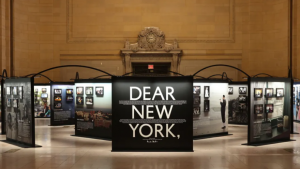“Creativity has so much power. Someone can write, paint or draw something today and change people’s lives,” says Cape Town-based creative Ben Moyo. The self-taught artist has chosen photography as his method of influence and by using the streets as his canvas, he hopes to change the way people of colour are viewed in creative spaces, shed light on the challenges faced by artists of colour, and ignite a greater conversation around Africans telling authentically African stories.
Moyo’s love for photography and the arts was sparked at an early age, but a lack of support for creatives in Zimbabwe drove him to South Africa. “In most cases you’re taught that you have to be a nurse or a doctor or a driver,” he laments.
The emphasis on “practical” career choices did not stop the young creative who, in 2011, left his home in search of a space that welcomed the goals he meant to pursue. The move came with its own challenges. Moyo soon found that financial constraints and a resistance to up-and-coming artists would prove difficult to overcome.
It’s very difficult to penetrate this industry, let alone if you’re a person of colour or you do not have the means, says Moyo. I am an example of that. It took me around three years to get people to notice who I am and up till now I don’t even have a camera because I can’t afford one. It’s those stories that need to be told.
As a curator for African creative network Creative Nestlings, Moyo prefers to immersive himself in the cultures he hopes to capture. Although he has been known to photograph fashion shoots, Moyo found that his creativity flourishes outside of controlled spaces. “I like street photography because it gives me that chance to interact with people. It’s much better for me to go out and discover someone or discover a culture out there.”
In telling the stories of the people and places he discovered, Moyo realised that his own story could be told in a way that could inspire the next African creative. As a black man, Moyo was often teased about the colour of his skin and ridiculed for his love of fashion and photography. He also found that the colour of his skin affected the way he was received in the creative world. To challenge the notions of “colourism” and to break down the self-hate around the colour of his skin, Moyo created a short film titled, The Chocolate Brother.
In the film, Moyo defines his complexion as one that should be celebrated. He also explains that dealing with “blackness” in the creative industry is just one of the challenges he hopes to explore with his work. “The Chocolate Brother started as a way to make people understand the stance that I am taking in saying that I am taking my power back as a black person,” says Moyo, adding that he believes Africans should take their stories back in the same way.
As Africans, we need to tell our own stories. These stories are being told in a way that is not relevant to us as Africans because they are being told from a viewpoint that does not resonate with us.
In the future, Moyo hopes to expand The Chocolate Brother into an exhibition that would not only explore the challenges faced by black people, but the challenges faced by all races and cultures that struggle with self-hate. “There are people who are telling stories about being black, there are people who are telling stories of being coloured, I want it [The Chocolate Brother] to grow in such a way that it addresses all kinds of issues,” he concludes.
Moyo currently uses his smartphone for photography and has launched an appeal to anyone who would be willing to donate a camera.















